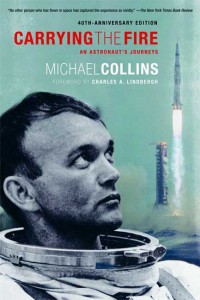I might come back and do a follow-up piece on the Lunar Lion team later, but for now it’s book review time! For Christmas, my sister got me Chris Hadfield’s newly released autobiography, called An Astronaut’s Guide to Life on Earth: What Going to Space Taught Me About Ingenuity, Determination, and Being Prepared for Anything.
I found this to be an interesting and entertaining read. I wouldn’t consider it gripping—I certainly enjoyed reading it, and finished it within a few days, but I was fine putting it down and coming back later.
I’m not sure if someone with no prior knowledge of Chris Hadfield would enjoy the read as much as I did. I’ll have to ask my uncle, who had no idea who Hadfield was before he also got the book for Christmas—how he considers himself a Canadian, I’ll never know. (Side note: My cousin also received this book for Christmas, so there were 3 copies floating around my grandparents’ house.)
Besides learning about Hadfield’s life, I learned a lot of interesting tidbits about astronauts/space agencies. Here’s one that I remember off the top of my head: there are NASA astronauts who were recruited during the shuttle era (NASA sent up its last shuttle in 2011. Now, the only way up to the International Space Station for Americans is in a smaller Russian Soyuz vessel) who are too tall to fit in a Soyuz. Therefore, they will never go to space.
Another tidbit: don’t become an astronaut if your only goal is to go to space, because a lot don’t. And even those who do spend a lot more time on Earth than they ever do off of it. For more about what astronauts do when not in space (and they do a lot), check out the book.
Here’s something else I found interesting: since he was 9 years old, Hadfield based his actions off of the question, “What would an astronaut do?” Hadfield knew that the chances of him ever becoming an astronaut were slim to none. After all, there were no Canadian astronauts when he was a boy. But he decided to go through life by doing things he liked (such as being an Air Force test pilot) that would also help him become an astronaut—just in case. And it paid off. Hadfield has been to space 3 times, and he had a long and fulfilling career as an astronaut.
If Chris Hadfield isn’t your guy—or if you want more—check out Carrying the Fire: An Astronaut’s Journey by Michael Collins.
From what I’ve heard, this clocks in as one of the best books ever written by an astronaut—though it is long (over 500 pages). Just check out some of the reviews on Amazon, where the book has earned 4.8/5 stars. For comparison’s sake, Hadfield’s book is sitting at 4.6/5 stars, with slightly more reviews. My understanding is that Collins’s book is more technical and in-depth and follows a chronological pattern, whereas Hadfield jumps through his life and applies his experiences to explore larger themes. I’ve started Carrying the Fire, but—as I’m sure you all know—it can be tough to make time for pleasure reading during the semester.
I doubt anyone else has read either of these books, but feel free to drop me a comment about your thoughts on these books, reading in general, or even astronauts in general!


